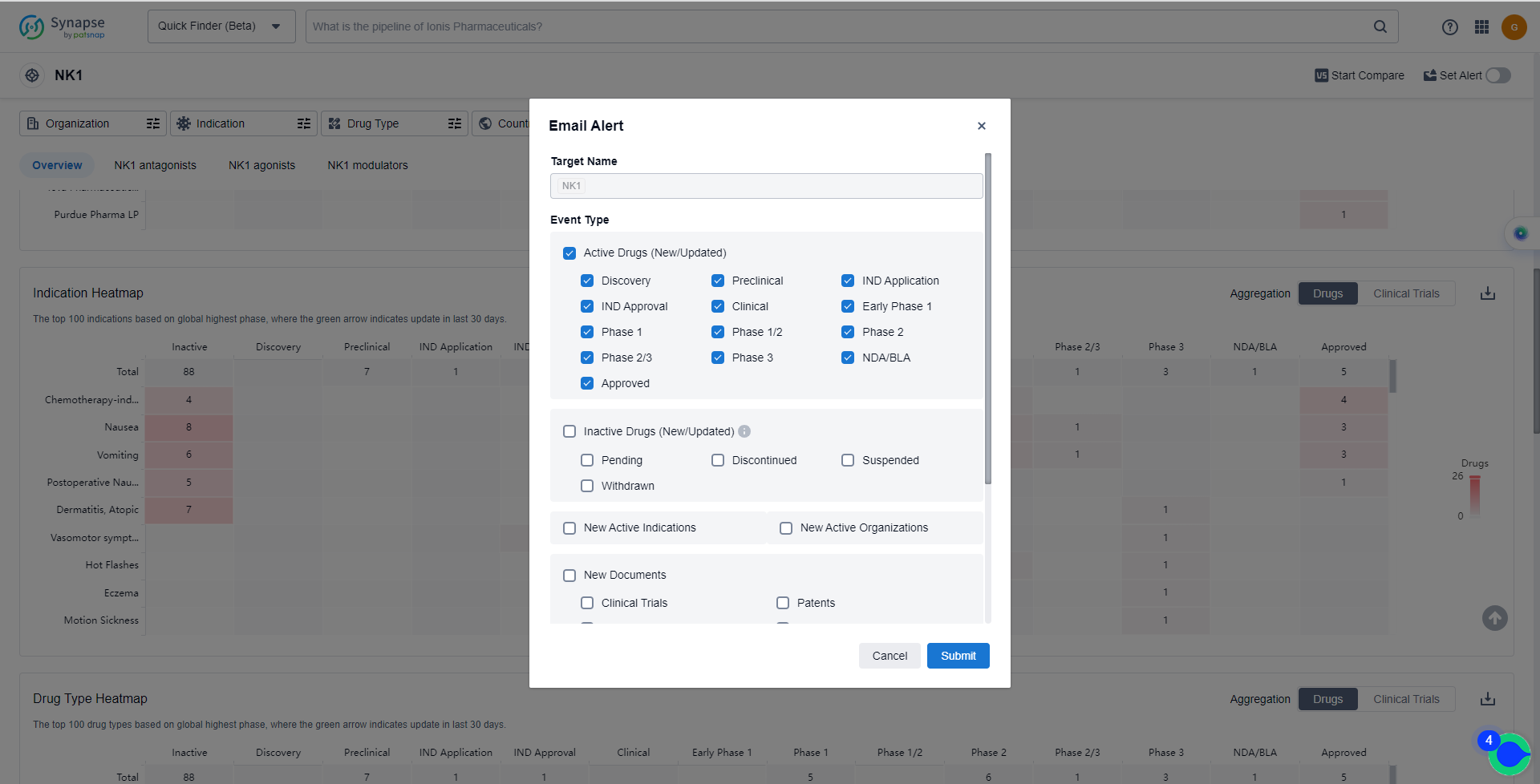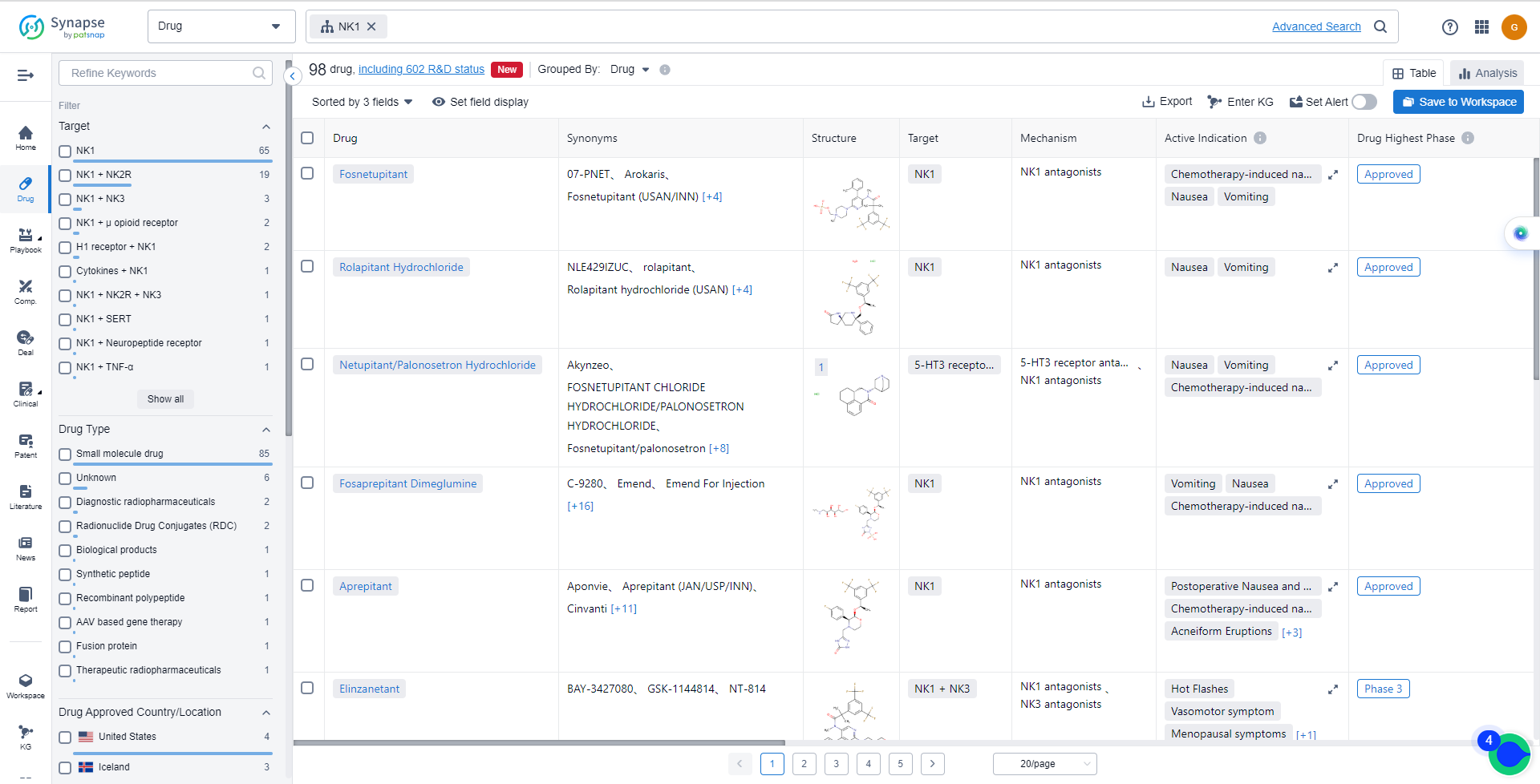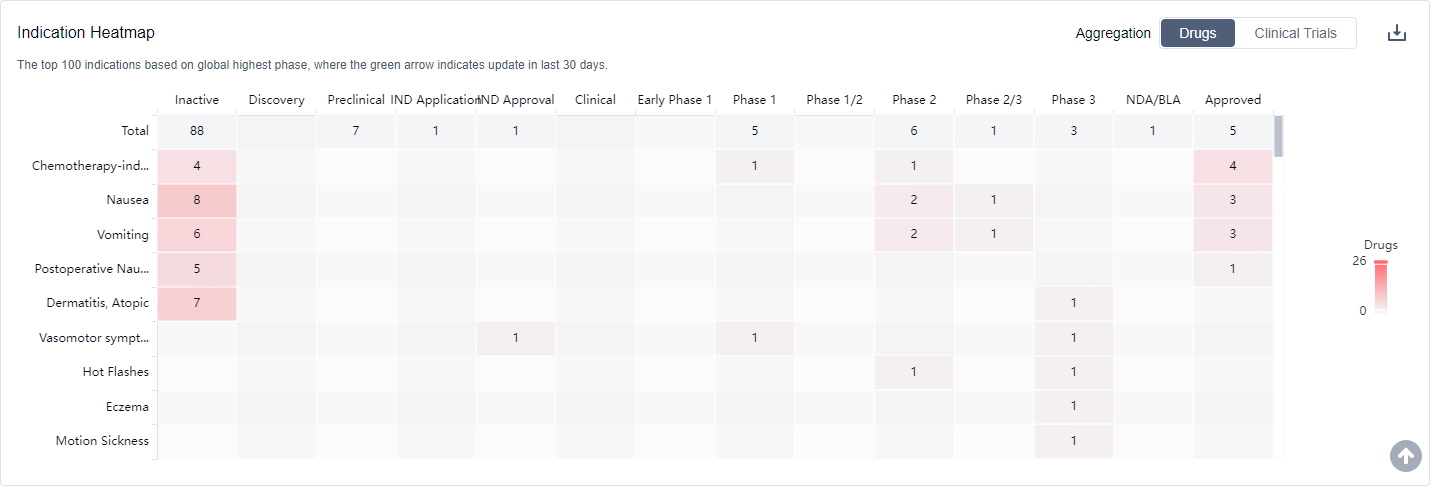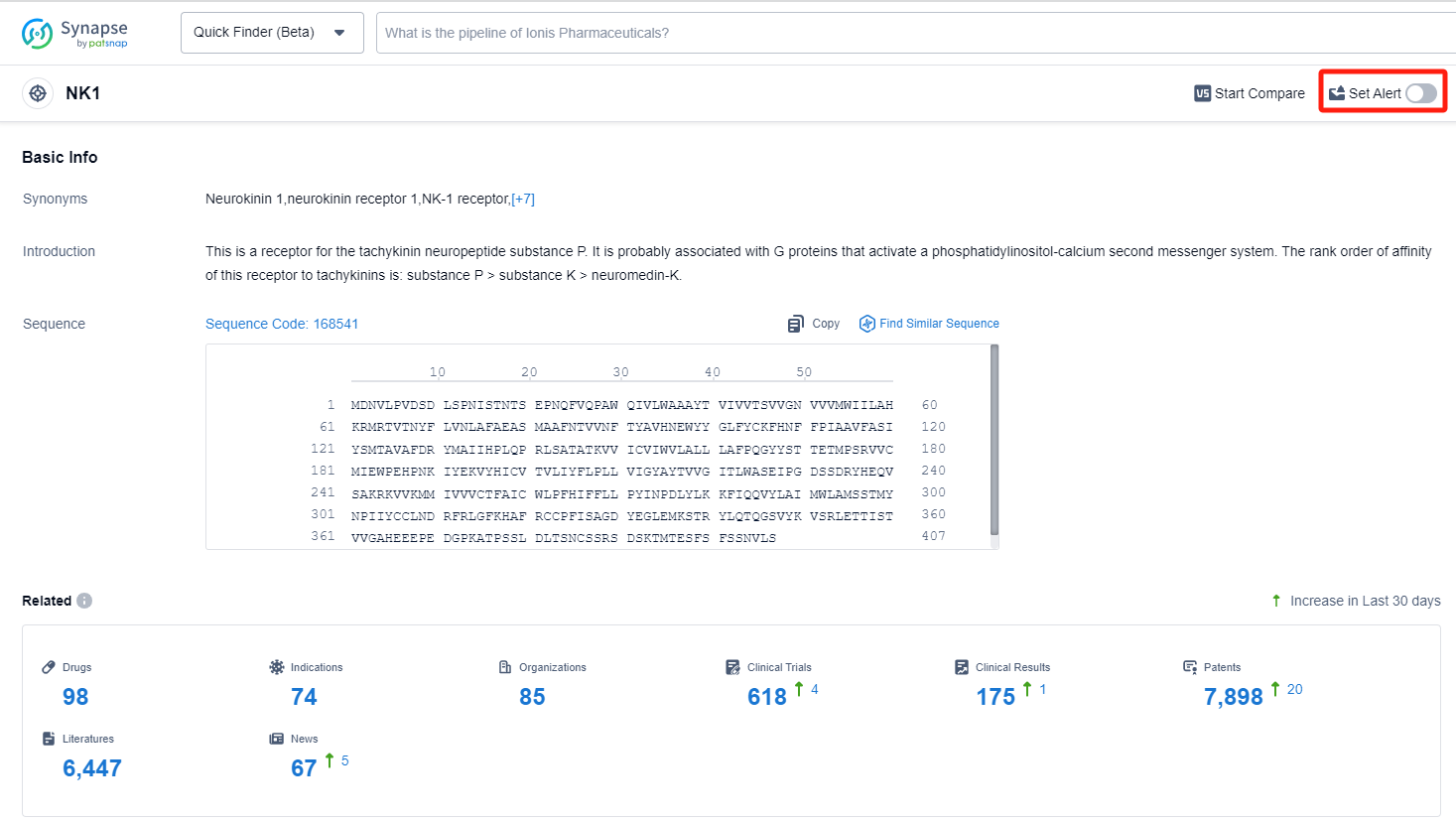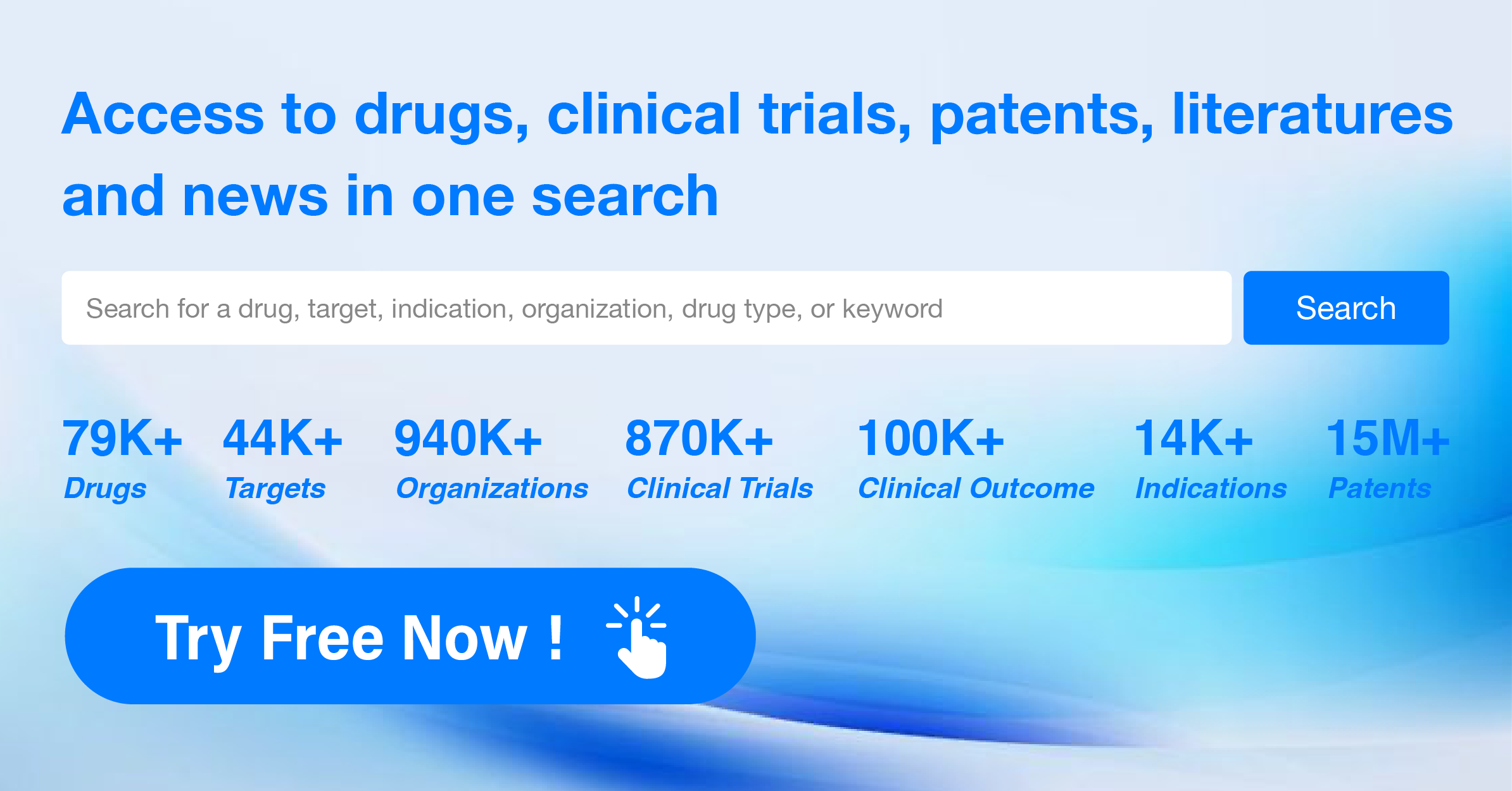Understanding NK1 antagonists and Methods to Keep Abreast of Their Recent Developments
The NK1 receptor, also known as the neurokinin-1 receptor, plays a crucial role in the human body. It is a type of receptor found in the central and peripheral nervous systems, particularly in areas associated with pain, inflammation, and mood regulation. Activation of the NK1 receptor by substance P, a neuropeptide, leads to various physiological responses such as pain transmission, vasodilation, and immune cell activation. Due to its involvement in these processes, the NK1 receptor has become a target for pharmaceutical interventions, particularly in the development of drugs for pain management, anti-inflammatory treatments, and mental health disorders.
Neurokinin 1 (NK1) antagonists are a novel class of medications that possess unique antidepressant, anxiolytic, and antiemetic properties. They competitively bind to the NK1 receptor, blocking the binding of substance P and preventing the emetic signal from being transmitted. This makes them effective in preventing acute and delayed nausea and vomiting.
The discovery of NK1 receptor antagonists was a turning point in the prevention of nausea and vomiting associated with cancer chemotherapy. The first registered clinical use of NK1 receptor antagonists was for the treatment of emesis associated with cancer chemotherapy. In the 1980s, several peptide antagonists derived from substance P were the first NK1 receptor antagonists. However, these compounds had problems with selectivity, potency, solubility, and bioavailability. For this reason, pharmaceutical companies concentrated on developing non-peptide NK1 receptor antagonists, and in 1991, three different companies revealed their first results.
Based on the analysis of the provided data, the current competitive landscape of target NK1 shows that multiple companies are actively involved in the development of drugs targeting this target. Merck & Co., Inc., Ono Pharmaceutical Co., Ltd., and Helsinn Healthcare SA are among the companies with the highest number of drugs in the Approved phase. The indications for these drugs include Chemotherapy-induced nausea and vomiting, Nausea, Vomiting, and various other indications. Small molecule drugs are progressing rapidly, followed by other drug types such as Fusion protein and Radionuclide Drug Conjugates (RDC). The United States, European Union, and Japan are leading in terms of development, with China also showing progress in the Approved phase. Overall, the target NK1 presents a competitive landscape with a diverse range of companies, indications, drug types, and geographical locations. Future development in this area will likely continue to focus on expanding indications and advancing drugs through clinical phases.
How do they work?
NK1 antagonists are a type of drug that work by blocking the activity of the neurokinin-1 (NK1) receptor. The NK1 receptor is a protein found in the central nervous system, as well as in other tissues throughout the body. It is primarily involved in transmitting signals related to pain, inflammation, and stress.
From a biomedical perspective, NK1 antagonists are commonly used in the field of biomedicine to treat various conditions such as chemotherapy-induced nausea and vomiting, postoperative nausea and vomiting, and psychiatric disorders like depression and anxiety. By blocking the NK1 receptor, these antagonists can help alleviate symptoms associated with these conditions.
The mechanism of action of NK1 antagonists involves binding to the NK1 receptor and preventing the binding of substance P, a neuropeptide that plays a key role in pain and inflammation signaling. By inhibiting the binding of substance P, NK1 antagonists can reduce the transmission of pain signals and alleviate symptoms.
Overall, NK1 antagonists are an important class of drugs in biomedicine that target the NK1 receptor to provide therapeutic benefits in various conditions related to pain, inflammation, and mental health.
List of NK1 Antagonists
The currently marketed NK1 antagonists include:
- Fosnetupitant
- Rolapitant Hydrochloride
- Netupitant/Palonosetron Hydrochloride
- Fosaprepitant Dimeglumine
- Aprepitant
- Elinzanetant
- Serlopitant
- Tradipitant
- Netupitant
- Orvepitant
For more information, please click on the image below.
What are NK1 antagonists used for?
NK1 antagonists are commonly used in the field of biomedicine to treat various conditions such as chemotherapy-induced nausea and vomiting, postoperative nausea and vomiting, and psychiatric disorders like depression and anxiety. For more information, please click on the image below to log in and search.
How to obtain the latest development progress of NK1 antagonists?
In the Synapse database, you can keep abreast of the latest research and development advances of NK1 antagonists anywhere and anytime, daily or weekly, through the "Set Alert" function. Click on the image below to embark on a brand new journey of drug discovery!
